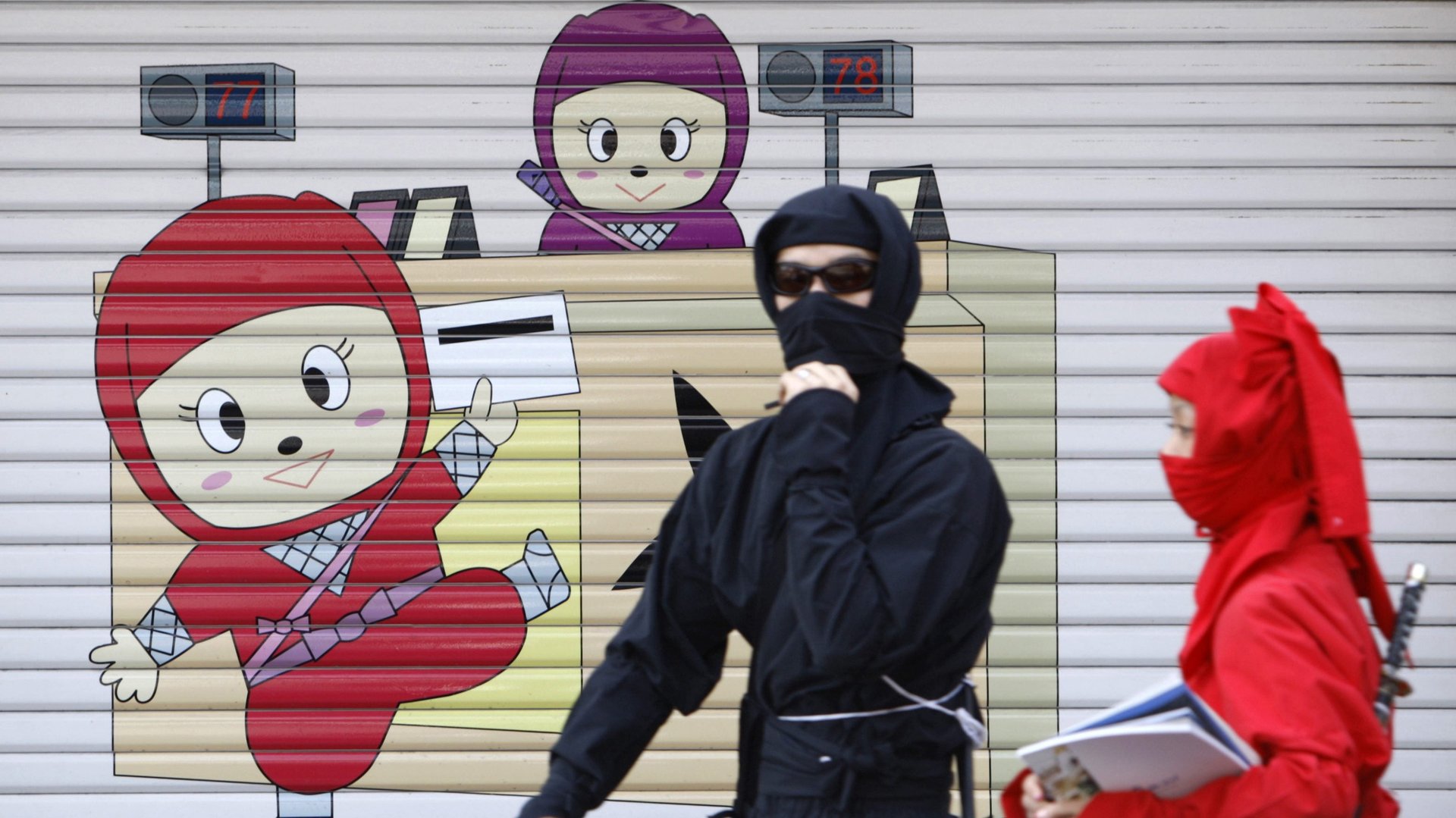Ninja uniforms, philosophy, and food are all the rage in Japan again
Ninjas-clad security guards are all the rage in Japan.


Ninjas-clad security guards are all the rage in Japan.
Security Service Association (SSC), a firm in western Japan, has started issuing new uniforms to its fleet of security guards. Ditching the usual military-inspired outfits, SSC’s “ninja squads” are dressed like the mythic stealth assassins schooled in the tenets of ninjutsu, reports Japan Times. Throughout Koto, a rural town three hours by train from Kyoto rich with ninja history, guards with fake throwing stars and wood katana swords can be spotted directing traffic, greeting customers at local coffee shops, and patrolling buildings. SSC’s enterprising CEO Maya Miyoshi is even pitching the squad to organizers of the 2020 Tokyo Olympics and Paralympics games.
Inspired by the burgeoning ninja tourism in Koto and neighboring Iga, Miyoshi came up with the novel twist to distinguish her crew. “I’ve always liked to do something different. I want to make a change in the security industry which appears to be old-fashioned and sober,” she says.
Of course, SSC’s costumed squads are not actual ninjas. Trained in covert arts, real ninjas shouldn’t even be seen in the daytime. Traditional ninja uniforms were considered camouflage and the simple garment has secret pockets for concealing weapons, as Koka Ninja House’s curators explain on their website:
The outer layer of their outfit was tea color or khaki color (Japanese persimmon) and the inner lining was black or grey. In the inside part of the outfit was a special pocket where they put shikoro, a small double edged-saw, a hand towel or other long and narrow things. The chest area was protected by the copper mirrors, oiled paper, paper treated with astringent persimmon juice and Japanese paper. All that material was bullet proof. Ninja invented different tools to protect themselves from the enemy.
“Hopefully these security guards will be effective in their assigned duties, not just clowns in ninja suits,” says David Hall, author of Encyclopedia of Japanese Martial Arts. “The modern Japanese pop idea of what a ninja was in Japan’s past is very different from the reality of what these espionage agents actually were and what they did.”
There are still students training in the 49 ninjutsu schools in Japan today. But 67-year old Jinichi Kawakami, who is known as “Japan’s last real ninja,” laments that their skills such as vanishing in a cloud of smoke or blade-throwing have no real utility in modern life.
There’s hope for the 500-year old practice. Last year, Mie University in Japan’s west coast opened the world’s first academic program on the study of ninja culture. Courses include ancient body control methods, castle architecture, and ninja no shokumotsu—the clean diet of these lean warriors designed to improve mental focus and fortify the body to fight injuries and fatigue.
Though the mode of warfare has changed, ninja arts professor Yuji Yamada explains there are facets of ninja’s spiritual training that’s very relevant today. At the program’s inauguration ceremony, Yamada said, “ninja wisdom tells us a lot about how to coexist with nature at a time when we are surrounded by machines and the artificial materials of the modern age.”